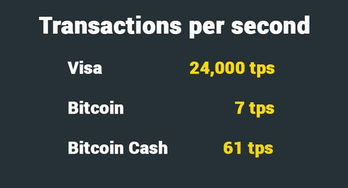Bitcoin Proof of Work: Understanding its Mechanism, Benefits, and Challenges
Bitcoin, the first cryptocurrency, operates on a mechanism known as Proof of Work (PoW). This article will delve into the workings of Bitcoin\’s PoW, exploring its advantages, the challenges it faces, and its impact on the cryptocurrency landscape.
Bitcoin, the first cryptocurrency, operates on a mechanism known as Proof of Work (PoW). This article will delve into the workings of Bitcoin’s PoW, exploring its advantages, the challenges it faces, and its impact on the cryptocurrency landscape.

What is Bitcoin Proof of Work?
Bitcoin proof of work is the consensus algorithm that underpins the Bitcoin network. It requires miners to solve complex mathematical problems to validate transactions and add them to the blockchain. This process not only helps in securing the network from attacks but also aids in the issuance of new bitcoins. The algorithm adjusts the difficulty of these problems, ensuring that blocks are mined roughly every ten minutes.
The PoW mechanism serves as a decentralized method to reach consensus among nodes in the network. When a miner successfully solves the problem, they broadcast their solution and the newly created block to the rest of the network, which verifies its accuracy before adding it to their copy of the blockchain.

Benefits of Bitcoin Proof of Work
The primary benefit of the Bitcoin proof of work mechanism is its security. The computational power required to solve the mathematical problems acts as a deterrent against malicious attacks such as double-spending. The more miners that participate in the network, the more secure it becomes. Additionally, PoW promotes a decentralized network where no single entity can control the majority of the mining power.
Another significant advantage is that the mining process is transparent. Every transaction is recorded on the public blockchain, making it nearly impossible to alter any historical data without a substantial amount of computational power. This transparency builds trust among users and stakeholders.

Challenges Facing Bitcoin Proof of Work
Despite its benefits, Bitcoin proof of work is facing several challenges. One of the primary concerns is the environmental impact of mining. The process of solving mathematical problems requires substantial energy consumption, leading to significant carbon footprints in regions reliant on fossil fuels for electricity.
Moreover, the increasing difficulty of mining means that only those with access to advanced hardware and significant financial resources can compete, potentially leading to centralization in mining operations. Furthermore, as the Bitcoin network grows, so does the demand for computational power, which can create bottlenecks and slow transaction times.
The Future of Bitcoin Proof of Work
As the cryptocurrency landscape evolves, the future of Bitcoin proof of work remains a topic of debate. Various alternative consensus mechanisms, such as Proof of Stake (PoS
), offer solutions to some of PoW’s shortcomings, particularly concerning environmental concerns. However, PoW has proven security and a long track record, making it likely to remain a core component of Bitcoin’s ecosystem for the foreseeable future.
In summary, Bitcoin Proof of Work is a foundational mechanism that facilitates transaction validation and network security. While it boasts various advantages, including decentralization and transparency, it also faces challenges like environmental impact and potential centralization. As the cryptocurrency space continues to develop, the discussion around the effectiveness and sustainability of PoW remains critical.




